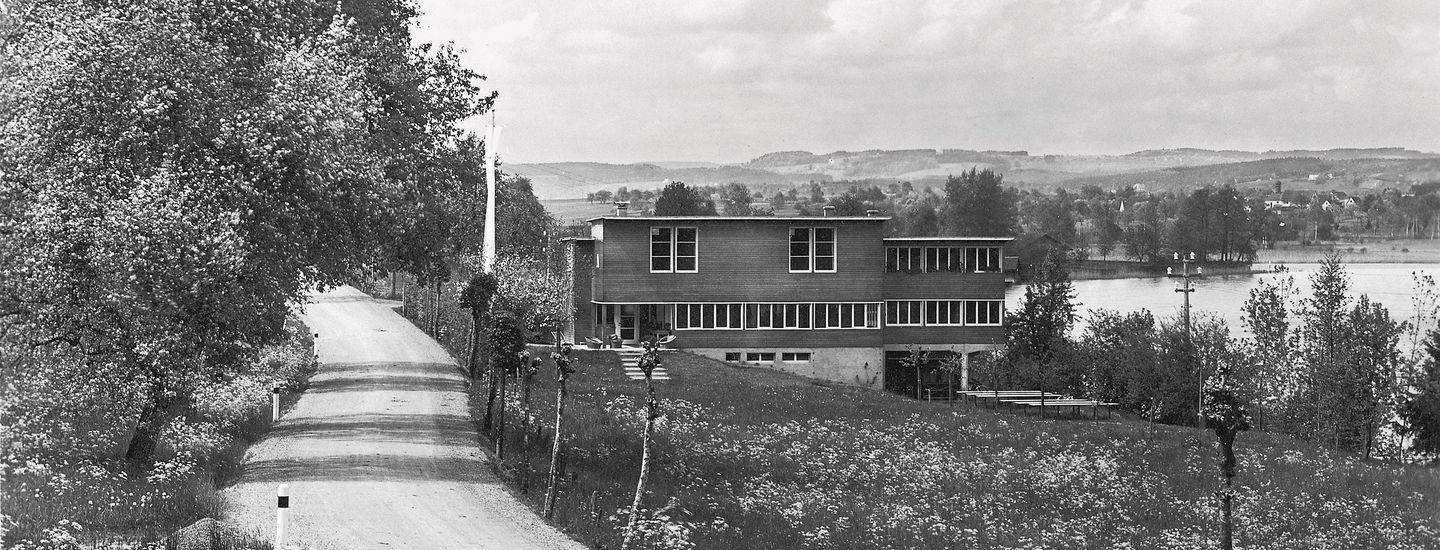
1939 to 1947
General mobilisation in Switzerland, World War II and the first post-war years
«Today, properly conducted youth hiking is a recognised and excellent educational tool that supports the moral, mental and physical improvement of young people. Furthermore, it helps to prevent the threat of neglect and also promotes the important qualities of our future soldiers.»[1]
Hiking needs to be learned, hiking makes you resilient
Fears of an imminent outbreak of war are growing. This makes it all the more important to ensure that the young men, who may soon have to go to the front, are physically and mentally fit and resilient.
In view of the fascist threat posed by the two neighbouring countries Germany and Italy, the 1939 National Exhibition in Zurich – also known colloquially as the “Landi” – becomes a central cornerstone of spiritual national defence. Switzerland’s readiness to defend and solidarity play a key role in this. The Swiss Youth Hostels are also represented. Together with the Zurich Youth Hostel Association, they construct a prototype building that will also serve as a youth hostel.
«‘Haus der Jugend’ (The Youth House) is built half in earnest and half in jest above the open-air theatre (…). In keeping with the diversity of its contents, this building, constructed by volunteers from a work camp, is similarly versatile in its design. Its content sheds light on the leisure activities of our young people. Hiking, handicrafts, charity work, labour services and sport, as well as religious education, scouting, hiking advice and youth hostels, and all that is part of the education of our young Swiss citizens outside of home and school. (…) The whole thing is delightful.»[2]
However, the idea of using a building as both a youth meeting place and hostel is not imitated for the time being, as the building is demolished after the end of the national exhibition in October. A mixed hostel based on the Landi model is not opened until 1956 in Bern.
During the Landi exhibition, Adolf Hitler orders the invasion of Poland, and on 1 September 1939 World War II breaks out in Europe. In Switzerland, the general mobilisation of war is announced for the next day. People’s lives change in one fell swoop. In the Zurich youth hostels, too, all the men on the executive board are required to join active service. However, it is soon ensured that the youth hostel association can continue to exist.
From 1940 onwards, the Swiss Youth Hostels only have a handful of foreign guests. Almost half of the almost 175,000 visitors in the second year of the war are military personnel.
In order to improve occupancy during the war years, the Bern Youth Hostels Association actively advertises school trips to its hostels in a supplement to the Swiss Teachers’ Magazine. More than 1,000 schools use the accommodation in 1942 and the quality of the accommodation has improved considerably over the past ten years: «Spacious dormitories with beds or bunkbeds, segregated for boys and girls, hiking kitchens for those who want to cook for themselves, rooms for teachers and group leaders, as well as recreation rooms, are designed to make it easy for a school class of 30 pupils to find accommodation.»[3]
[1] Quoted from Schweizerische Lehrerinnenzeitung, Volume 44, Issue 13, 1940, p. 220f.
[2] Schweizerische Bauzeitung (Swiss Construction Journal), 1939, volume 113, issue 18, construction report on the opening of the Swiss National Exhibition at the end of April 1939, p. 216.
[3] Supplement by the Bern Youth Hostels Association that features in the Schweizerische Lehrerinnenzeitung (Swiss Teachers' Journal), Volume 48, Issue 17, 1943–1944).








Share this page